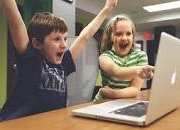Customer Experience: Are we measuring the right things?
Article (PDF Available)
Abstract
Marketing theory and practice evolved dramatically through a series of transformations from products to services and, recently, customer experiences. Each stage has its own perspective on marketing’s purpose, the nature of customer value, and measurements that calibrate performance and guide managerial decisions. The latter is of particular interest to market researchers. Measurement (research) typically lags behind changes in marketing theory due to institutional factors and the time it takes for new practices to diffuse. The authors posit that firms still measure customer experience against criteria more suited to evaluating product and service marketing. Research practice seems rooted in 1990s notions of service quality, itself an outgrowth of total quality management (TQM) originating in manufacturing during the 1980s. The authors argue that market researchers will serve their organisations and customers better if they take an active role in updating the customer experience measurement commensurate with advances in the conceptualisation of that which firms offer customers. A rapid evolution from product to service to experience Marketing practice and research have undergone a series of large-scale transformations over the past 25 years, shifting focus from (1) creating fast-moving consumer product brands to (2) building customer relationships through service marketing, and now to (3) creating compelling customer experiences. The authors propose that marketing research has not kept up with these changes (Gordon 2006), generating a mismatch between what marketers are now trying to achieve and what market research measures. The first marketing ‘paradigm shift’ – the change from product brand to service-based relationship marketing – was acknowledged in the Received (in revised form): 16 May 2011
Figures

Full-text (PDF)
Available from: Phil Klaus
International Journal of Market Research Vol. 53 Issue 6
771
© 2011 The Market Research Society
DOI: 10.2501/IJMR-53-6-771-792
Customer experience
Are we measuring the right things?
Stan Maklan
Cranfield School of Management
Philipp “Phil” Klaus
ESCEM School of Business and Management
Marketing theory and practice evolved dramatically through a series of
transformations from products to services and, recently, customer experiences.
Each stage has its own perspective on marketing’s purpose, the nature of
customervalue,andmeasurementsthatcalibrateperformanceandguide
managerial decisions. The latter is of particular interest to market researchers.
Measurement (research) typically lags behind changes in marketing theory due to
institutional factors and the time it takes for new practices to diffuse. The authors
posit that firms still measure customer experience against criteria more suited
to evaluating product and service marketing. Research practice seems rooted in
1990s notions of service quality, itself an outgrowth of total quality management
(TQM) originating in manufacturing during the 1980s. The authors argue that
market researchers will serve their organisations and customers better if they take
an active role in updating the customer experience measurement commensurate
with advances in the conceptualisation of that which firms offer customers.
A rapid evolution from product to service to experience
Marketing practice and research have undergone a series of large-scale
transformations over the past 25 years, shifting focus from (1) creating fast-
moving consumer product brands to (2) building customer relationships
through service marketing, and now to (3) creating compelling customer
experiences. The authors propose that marketing research has not kept up
with these changes (Gordon 2006), generating a mismatch between what
marketers are now trying to achieve and what market research measures.
The first marketing ‘paradigm shift’ – the change from product brand
to service-based relationship marketing – was acknowledged in the
Received (in revised form): 16 May 2011
Customer experience
772
1990s. Its proponents accurately described a change in both customer
behaviour and organisational strategies that emphasised the value of the
customer–company relationship in addition to the intrinsic utility of the
goods and services offered (Gronroos 1994; Christopher 1996; Sheth
et al. 2000; Payne & Frow 2005). Product marketing was not ‘dead’; it
was still necessary, but no longer sufficient to remain competitive. No
sooner had the marketing community edged towards agreement on this
major transformation, than the growth of the internet spurred a second
change. The internet is transforming relationship marketing from its initial
database orientation (Peppers & Rogers 1994; Payne & Frow 2005)
into collaborative relationships with customers. In an important article
identifying types of marketing practice, Coviello et al. (2002) distinguish
database marketing from interactive customer relationships, the second
being described as the more evolved marketing practice. This emerging
connected world is not only more interactive, it is community-centric
rather than company-centric (Achrol & Kotler 1999), and supported by
the increasingly ‘rich data’ (Hoffman & Novak 1996) on the internet (e.g.
Skype video, YouTube). These new forms of customer communication
allow firms both to compete in the market for physical goods and to
create markets for value-added management of information flows around
those goods (Rayport & Sviokla 1994; Weiber & Kollman 1998). Many
scholars go so far as to suggest that marketers should conceive all goods
as services (Vargo & Lusch 2004) and that the basis of offers must be
thought of as product-service systems – that is, systems that provide the
experience (value) customers want without necessarily requiring them to
own the products that create the experience. The dominance of the service
economy in western economies is now an article of faith, widely cited in
both academic and practitioner marketing journals.
This rapid evolution of marketing theory and practice is now continuing
to a post-service marketing phase. Vargo and Lusch (2004) propose that
marketing has evolved from bringing goods ‘to market’ through a stage
of market and consumer targeting (‘marketing to’) and is now focused on
‘market with’: co-creating value collaboratively with customers over an
extended time frame. Co-creation unites the focal company’s network of
relationships with customers’ capabilities, enabling customers to achieve
higher-order goals or objectives. These higher-order goals are termed value-
in-use, which is defined as ‘a customer’s functional outcome, purpose or
objective that is directly served through the product/service consumption’
(Macdonald et al. 2009, p. 3). Company offers are therefore constructed
as product-service-systems, bundles of products and services that fulfil
International Journal of Market Research Vol. 53 Issue 6
773
an ever greater part of the customer’s needs than can be addressed by
product or service offers alone (Baines et al. 2007). Other researchers
describe a similar development of marketing from transaction, to relation
and ultimately to networks wherein the focal firm’s capabilities and
assets facilitate customers creating value directly with other participants
in a networked environment (Coviello et al. 2002; Maklan & Knox
2009). While each perspective of the evolution of marketing has its own
conceptualisation and terminology, they offer, to a great extent, parallel
and commensurate perspectives on the changing focus of marketing
practice and the value of the firm’s offer.
The authors assert that this rapid evolution of marketing ‘paradigms’
mirrors a real-world occurrence of marketplace competition, moving
from products to services to a post-product, post-service phenomenon
that is still evolving and not yet fully formed. However, we argue that the
most popular expression of this emerging marketplace reality is customer
experience (Klaus & Maklan 2007; Gambetti & Graffigna 2010; Lemke
et al. 2010).
The term experience economy possibly originates with Pine and
Gilmore (Gilmore & Pine II 1997, 2002), who make the overt claim that
experience represents a move beyond products and service. Their work,
echoed by many at that time, focused the discussion of experience upon
immersive environments such as Starbucks, American Girl Dolls (Pine
& Gilmore 2004), Harley-Davidson outings (Schouten & McAlexander
1995) or white river rafting (Arnould & Price 1993). Nonetheless,
this encouraged researchers to rediscover much earlier scholarship
arguing that people buy goods and services as a means to fulfil deeper
emotional, sensory and hedonic aspirations. With this lens, what matters
to customers is how they experience the extended process of acquiring,
integrating and deploying that is necessary for them to achieve their
aspirations and higher-order goal – that is, value-in-use. Vargo and Lusch
(2004) contrast this with traditional Goods Dominant Logic that sees
value arising from economic exchange – that is, value is measured by
the price paid (price premium to competitors). While many scholars and
practitioners acknowledge that experience should be the new focus of
managerial attention, they are less unified on both its precise definition
and its measure.
This creates a dilemma for market researchers. While acknowledging
that organisations are increasingly competing on the basis of customer
experience, the concept is defined imprecisely and, as yet, there are no
widely agreed measures of it. The authors maintain that market research
Customer experience
774
remains wedded to a product/service era-inspired mantra of quality whose
limited conceptualisation of experience does not help organisations assess
how customers evaluate their organisations’ offers. Customer experience
blurs traditional distinctions between products and services because of
its focus on customers’ value-in-use, which arises from combinations of
products and services.
In this article, we focus on one of the most profound changes to
measuring marketing effectiveness relevant to the emerging experience
marketing model. The paper is structured as follows: first, we discuss
service quality, that which most firms measure today, and we assert that
its conceptualisation is too limited to capture that which firms wish to
achieve – better customer experience. In so doing, we review briefly the
most widely researched and used measure of service quality, SERVQUAL.
We then suggest how market researchers can extend the notion of quality
to measure customer experience. We exemplify this in practice with an
example of an empirically validated measure of experience quality for
a UK mortgage provider. This study is intended purely to illustrate one
company’s research and cannot be evaluated as a generalisable model of
customer experience quality. The paper makes it very clear that customer
experience research is likely to prove very context specific. Finally, we
discuss the implications of measuring experience quality for the role of
market researchers.
From measuring service quality to customer experience
The authors see in SERVQUAL a link to the total quality management
(TQM) movement that gained popularity in western economies as a
response to Japanese competition grabbing market share across a wide
range of product categories in the 1970s and 1980s. The language of
‘quality’ dominated the management discourse at that time: kaizen, quality
circles, just-in-time and lean (Womack & Jones 2005). Declaring victory in
the battle to improve product quality, consultants and academics exported
their quality programmes and management models to the service sector.
Levitt (1976) argues that service should be ‘industrialized’ (now often
referred to as ‘productization’) so that firms could realise the increased
productivity seen in the goods sector. In addition to increased productivity,
ReichheldandSasser(1990)claimthatadaptingthe‘zero-defect’
philosophy of product quality into service marketing reduces customer
defection, producing disproportionate profit improvements. Other scholars
suggest that the mechanism by which quality improved business results
International Journal of Market Research Vol. 53 Issue 6
775
was through customer satisfaction (Anderson et al. 1994). In this model,
service quality creates favourable purchasing intentions, willingness to
pay more and recommendation. The link between customer satisfaction
and favourable business outcomes is well established (Anderson et al.
1997), and generates great interest in measuring customer satisfaction
and one of its key consequences, Net Promoter Score (Reichheld 2006).
So strongly held is the view linking satisfaction, recommendation and
business outcomes, that Reichheld (1996) claims that Net Promoter Score
is the sole metric required to understand the effectiveness of your business
from the customer’s perspective. This view has been contested vigorously
by researchers trying to replicate his research (Keiningham et al. 2007), yet
anecdotally the authors observe that many firms request its measure from
their market researchers.
Service quality was originally conceptualised as a gap between
expectationsandtheconsumer’soverallassessmentoftheservice
encounter (Parasuraman et al. 1988). This concept led to the popular
management adage of needing to ‘delight’ customers by always exceeding
their expectations. Service quality’s most popular measure is SERVQUAL,
a 22-item scale whose dimensions are: reliability, assurance, tangibility,
empathy and responsiveness. When implementing the measure, researchers
focus on a particular service episode and ask customers to assess the
dimensions versus their prior expectations using a five-point Likert scale
(Morrison Coulthard 2004).
SERVQUAL has been challenged conceptually, methodologically and
with respect to the validity of its dimensions. It is not the purpose of this
article to review the numerous discussions on this measure, rather to draw
upon that literature to assert that it is not built for today’s experience
focus. We suggest the following to market researchers as to how they
might conceive an appropriate measure of experience quality.
• Scholars contest the assumption that customers assess service
or experience against expectations (Cronin Jr & Taylor 1992).
Research subsequent to Parasuraman et al. (1988) has failed to
validate SERVQUAL’s dimensions (Buttle 1996), thus questioning
its generalisability. Experience reflects customers’ overall assessment
of value rather than in relation to expectations, highlighting the
importance of these perceptual attributes. These attributes reflect
customers’ higher-order objectives leading to purchasing behaviour
better than technical aspects of service do, the latter subject to frequent
changes due to technology and competition. Therefore perceptual
Customer experience
776
attributes are more stable as the focus of evaluation of experience
(Parasuraman et al. 2005).
• SERVQUAL focuses largely upon customers’ assessment of the service
process and human interactions (Mangold & Babakus 1991; Cronin
Jr & Taylor 1992; Richard & Allaway 1993). The post-product, post-
service perspective of marketing concentrates on customers’ value-in-
use: the extent to which customers have accomplished higher-order
goals that represent a mix of utilitarian and emotional factors (Chitturi
et al. 2008). Individual components of a service encounter may be
assessed as ‘good quality’, but that does not automatically mean that
the overall experience is judged high quality, nor does measuring the
components of service quality ensure that customers achieve their
desired outcomes. The authors believe that SERVQUAL reflects the
quality management origins of service quality, a manufacturing-like
atomisation of complex service systems and subsequent optimisation
of each component; it is highly contestable if this corresponds with
how customers assess their overall experiences. Lemke et al. (2010)
describe this argument as a debate between those who believe in the
embedded value of a service offer versus those who believe that value
is created by customers in use: co-creation.
• SERVQUAL’s dimensions are too limited (Sureshchandar et al. 2002)
to capture customer experience fully, and marketing scholars suggest
a broader and more holistic conceptualisation, and therefore measure,
of experience (Verhoef et al. 2009). Gentile Spiller and Noci (2007,
p. 397) suggest that ‘customer experience … is strictly personal
and implies the customer’s involvement at different levels (rational,
emotional, sensorial, physical, and spiritual)’. While such wide-
reaching conceptualisations are consistent with experience, they may
be too broad to defy practical measurement and risk conceptualising
customer experience as the ‘theory of everything’. The existing
experience research considers specific, normally high-involvement,
contexts given its personal and contextual nature (Sharma & Patterson
2000; Chandon et al. 2005). This intuitively appealing approach to
experience makes it difficult to create a universal measure similar to
SERVQUAL, customer satisfaction or Net Promoter Score. As most
of the academic literature to date is of a conceptual nature, scholars
have not fully addressed the issue of generalisability. Responding to
this challenge, Lemke et al. (2010) develop a conceptual framework
International Journal of Market Research Vol. 53 Issue 6
777
for customer experience from a cross-industry study using repertory
grid analysis. They find that experience is generated from three types
of encounter: (1) communication, (2) service delivery and (3) usage.
Service delivery is assessed on the basis of product, service and
experience quality. The three encounters are moderated by the context
of the experience – that is, involvement, complexity, relationships and
the hedonic nature of the experience. They acknowledge that this study
is experimental and that larger, content-specific research is needed to
validate the dimensions of their framework against the outcomes they
propose: commitment, purchase, repeat purchase and word-of-mouth.
• Customers take a longitudinal perspective when assessing their
experiences and will believe that they have had experience with
a company even before they have bought something; this arises
from advertising, promotion and word-of-mouth. Therefore, market
researchers need to measure customer experience before and after the
service encounter(s), and account for both direct and indirect contacts
and peer influences (Berry et al. 2002; Payne et al. 2008). This
generates practical challenges for market researchers. The longer the
time frame used, the harder it is to distinguish experience from overall
brand perception. Too short a time perspective, and the researcher
risks assessing experience in an atomistic fashion.
• Experience is likely to arise across channels, the cumulative effect of
numerous encounters, rather than being driven by a single episode.
We do not understand how consumers synthesise these multi-channel
encounters into an overall assessment of experience, but it is likely
not to be a pure addition of individual service episodes (Sharma &
Patterson 2000; Chandon et al. 2005).
• Experience research should enable more direct, empirically validated
effects upon customer behaviour to improve accountability. Even
strongadvocatesofthevirtuouscyclebetweenservicequality,
customer satisfaction and customer behaviour admit that this chain
is difficult to make operational (Sureshchandar et al. 2002) and
researchable (Zeithaml et al. 1996). A more direct and quantifiable
relationship is empirically evident between customer satisfaction and
outcomes. Satisfaction builds market share profitably, thus improving
shareholder value (Anderson et al. 1994, 2004; Fornell et al. 2006),
improves cash flow while reducing risk (Gruca & Rego 2005),
Customer experience
778
improves customers’ commitment, deepens customers’ relationship
with the firm (Gustafsson et al. 2005) and enhances customers’
propensity to pay a premium (Homburg et al. 2005). Service
quality infers these benefits by suggesting the link between quality
and satisfaction. Experience measures should be linked directly to
exogenous variables that include ‘hard’ behavioural outcomes close to
profitability, such as repurchase.
This academic discussion so far has generated characteristics of the
experience concept that can guide fieldwork: continuing to measure service
quality is probably necessary for most firms, but not sufficient. Market
researchers need to develop an appropriate measure for the concept of
customer experience that:
• is based upon an overall cognitive and emotional assessment of value
from the customer’s point of view rather than evaluated against
benchmarks or expectations
• captures the value-in-use of the organisation’s offer, not just the
attributes of product and service delivery
• assesses, as much as is practical, emotional responses as well as the
functional delivery of the organisation’s promise
• determines a reasonable focal time period, sufficiently pre and post the
service delivery, to allow the customer to assess the experience over
time and across channels
• is validated against behavioural measures.
The rest of this paper explains how the authors executed these principles
in the context of UK mortgage services. We are not proposing a generalised
model; rather we present a single, context-specific example to illustrate
how a customer insight team can address the challenges of measuring
customer experience.
Developing a measure of customer experience
The authors worked with a major UK bank interested in understanding how
to differentiate its household mortgage offer. The UK mortgage market is
characterised by revolving two- or three-year contracts such that consumers
face repurchase decisions frequently over the lifetime of their mortgages,
thus generating high levels of customer defection and frequent price-based
promotions. We developed a measure for Customer Experience Quality
International Journal of Market Research Vol. 53 Issue 6
779
(EXQ) to identify the dimensions, and their attributes, that explain its most
important marketing outcomes (Klaus & Maklan 2011): loyalty (defined
as repurchase of the mortgage), word-of-mouth recommendation (Samson
2006) and satisfaction. Those marketing outcomes represent the authors’
synthesis of the academic literature on customer experience and relevant
scale development. The methodology followed Churchill’s (1979) widely
cited scale development paradigm (Terblanceh & Boshoff 2008) and other
relevant scale-developing studies (Walsh & Beatty 2007). It was developed
in four stages: (1) scale generation, (2) initial purification, (3) refinement
and (4) validation against the most important marketing outcomes. These
stages are described briefly below. It is not the authors’ intention to focus
this article on scale development methods, rather this is presented as an
example to market researchers of how they might address the challenge of
moving to a post-service measure of customer experience (Appendix 1).
Stage 1 – Scale generation articulates the meaning and domain of service
experience based on insights from the literature and a comprehensive
qualitative study. It results in a preliminary scale containing 37 items
thatrepresentfivedimensions:(1)processexperience,constituting
experiences connected with securing the mortgages, such as process ease
(frustration); (2) product experience, representing experiences associated
with the features and range of products offered, such as the product
diversity and/or additional offerings of the service provider; (3) lifetime
costs, signifying the total cost of searching, applying and securing a
mortgage, including judgements about the importance of securing the best
mortgage rate available; (4) risk, meaning the perceived risk of accepting
a significant financial obligation; and (5) provider experience, highlighting
the customer’s assessment of all interactions with the service provider
before, during and after securing a mortgage – for example, the influence
the interpersonal skills of the service provider’s personnel had on the
customer’s decision.
Stage 2 – Initial purification assesses the scale with a representative
sample of the bank’s repeat mortgage purchasers (75 qualified responses).
Using exploratory factor analysis, the scale is purified to 19 items that
represent four customer experience dimensions. Interestingly, most of the
items in the qualitatively generated dimension of lifetime costs proved to
be statistically irrelevant. This indicates that the total costs of searching,
applying, securing and paying for the mortgage are not significantly
related to the quality of the customer experience. The costs associated with
searching for a mortgage, however, are now captured by the dimension
outcome focus. Of course, we acknowledge that this may arise because of
Customer experience
780
the nature of the market: few large brands of providers with a confusing
array of products that make price transparency difficult.
Stage 3 – Refinement via confirmatory factor analysis (CFA) validates the
purified scale based on a representative sample (218 qualified responses),
which confirms the scale’s reliability and validity.
Stage 4 – Validation is achieved by assessing the extent to which
customerexperienceanditsdimensionsexplainconsumers’overall
satisfaction perceptions, repeat purchase and word-of-mouth.
Stage 1: scale generation
Stage 1 explores the perceptual attributes of experience through in-depth
interviews using soft laddering (Grunert & Grunert 1995), a technique
where respondents are restricted as little as possible in their natural flow
of speech. This is an accepted method for assessing consumers’ cognitive
structures and underlying purchasing (Reynolds & Gutman 1988).
We achieved data saturation (Glaser & Strauss 1967) after conducting
individual in-depth interviews with 30 mortgage customers from the UK
over a four-week period; each interview lasted between 30 and 60 minutes.
We used a random sample of the bank’s customers who had purchased
one or more mortgages in the previous six months, split between first-time
buyers and repeat buyers.
The interviews were transcribed, coded and analysed following a
grounded approach (Strauss & Corbin 1998); 58 customer experience
items were generated. To maximise the content and face validity of the
items generated, a panel of expert judges reviewed the retained item pool
(Dagger, Sweeney & Johnson 2007) and performed three tasks: (1) assessed
the similarity of items, the clarity of phrasing and the terminology used
in the scale; (2) rated each item with respect to its relevance to the item
description; and (3) suggested dimensions and sub-dimensions that evolved
from the research model and items. Five dimensions representing 37 items
resulted from this stage.
Stage 2: scale purification through exploratory factor analysis (EFA)
The scale was purified through EFA. Data were collected through an
online questionnaire accessible through a link sent by the bank to a sample
of customers who had purchased more than one mortgage from the bank
and the most recent mortgage within the previous six months, resulting in
a sample of 75 repeat purchasers.
International Journal of Market Research Vol. 53 Issue 6
781
Exploratory factor analysis summarises the data into a minimum
number of factors for prediction purposes. The resulting purified scale
comprises four primary dimensions with 19 corresponding items which,
in conjunction with the expert panel, were labelled as follows to make the
acronym POMP.
1. Product experience – customers’ perception of having choices and the
ability to compare offers. Interviewees often referred to the need to
compare offers, even if they were from the same provider and differed
merely in length of the mortgage, because it ‘gave them the feeling of
having a choice’, and without a choice they were unlikely to accept the
offer ‘no matter how good it was’.
2. Outcome focus – is associated with reducing customers’ transaction
costs, such as seeking out and qualifying new providers: ‘We just
wanted to get the mortgage as soon as possible.’ Also, once a
relationship is established, these goal-orientated past experiences (Roy
et al. 1996) build a habit despite the awareness of competitors’ offers:
‘I know there are better offers, but why should I bother; here I know
what I will get and it’s straightforward.’
3. Moments-of-truth – this dimension is characterised by that which is
commonly known as moments-of-truth, emphasising the importance
of service recovery (Tax & Brown 1998) and flexibility (Liljander
& Strandvik 1997) when faced with unforeseen complications.
This dimension also incorporates evaluations of bank employees’
interpersonal skills connected to these moments-of-truth: ‘I was really
upset about what happened, but the way they [the bank] dealt with me
gave me the confidence that I had made the right decision in staying
with them.’
4. Peace-of-mind – this dimension includes statements associated strongly
with the emotional aspects of service and is based upon the perceived
expertise of the service provider and the guidance provided throughout
the process (Bendapudi & Berry 1997). These attributes put customers
‘at ease’ and increase ‘confidence in the provider’. In this research,
customers link peace-of-mind with their relationship to the bank and
express a preference for being dealt with as a valued customer rather
than in a ‘purely transactional way’.
It is worth noting that the cost of the mortgage and brand of the supplier,
whichfeaturedinthequalitativestageasmotivatorsofconsumer
behaviour, proved insignificant statistically when assessed quantitatively.
Customer experience
782
In this study, the costs of searching, applying, securing and paying for the
mortgage are not significantly related to the quality of service experience.
The costs associated with searching for a mortgage, however, are captured
by the dimension outcome focus.
Stages 3 and 4: reliability and validity assessment through confirmatory
factor analysis
To perform the analysis, 218 qualified responses were collected through an
online questionnaire accessible through a link sent by the bank to a random
sample of customers who had repurchased within the previous six months.
The exploratory and confirmatory analysis samples are analogous, and do
not differ significantly in terms of age, gender or educational background
(see Appendix 3).
Existing scale development studies generated measures of the exogenous
variables: customer satisfaction, loyalty and word-of-mouth intentions.
The outcome is a scale measure of customer experience (EXQ), illustrated
in Figure 1. A full definition of each of the attributes identified in the
left-hand-side boxes is provided in Appendix 2. The authors are happy to
share further data of method, questionnaire, results and attendant validity
testing with any interested readers.
Figure 1 Customer experience quality scale: dimensions, attributes and exogenous variables
0.69
0.66
0.86
0.63
0.94
0.61
0.71
Loyalty
Word
of mouth
Customer
satisfaction
Customer
experience
quality (EXQ)
Freedom of choice
Cross product comparison
Comparison necessity
Account management
Flexibility
Proactivity
Risk perception
Interpersonal skills
Service recovery
Inertia
Result focus
Past experience
Common grounding
Expertise
Process ease
Relationship vs. transaction
Convenience retention
Familiarity
Independent advice
Peace
of mind
Outcome
focus
Moments
of truth
Product
experience
International Journal of Market Research Vol. 53 Issue 6
783
Thescaledevelopeddemonstrateshighvalidityandreliabilityin
explaining the relationship between customer experience and the selected
outcomes. The squared multiple correlations are as follows: 86% for
loyalty, 63% for customer satisfaction, and 94% for positive word-of-
mouth intention.
Traditionally, customer satisfaction is modelled as a mediator between
service quality and behavioural intention (Cronin Jr & Taylor 1992).
Research points out that service quality also has a mediating role between
service attributes and behavioural intentions, stating that its attributes are
more strongly related to the overall service quality than to behavioural
intentions (Dagger et al. 2007). Our findings demonstrate significantly
stronger relationships between customer experience quality and loyalty,
as defined in this study, than between customer satisfaction and loyalty.
Comparedwiththerelationshipbetweencustomersatisfactionand
word-of-mouth, we also established a more direct link between customer
experience quality and word-of-mouth. Therefore, while there is a body
of literature offering customer satisfaction as a mediator between service
quality and loyalty and word-of-mouth (Seiders et al. 2005), our research
advocates that customer experience quality could be an even better
predictor of loyalty and word-of-mouth (see Table 1).
We now describe the importance of the individual dimensions of
customer experience in relation to these important marketing outcomes
(see Table 2).
The dimension peace-of-mind, strongly associated with the emotional
aspects of the service evaluation, has the strongest correlation of all EXQ
Table 1 Explanatory power of experience and satisfaction
Customer satisfaction Loyalty Word-of-mouth
Experience quality 0.63 0.86 0.94
Customer satisfaction – 0.65 0.87
Table 2 Standard path estimates
Dimension Customer satisfaction Loyalty Word-of-mouth
Peace-of-mind 0.90 0.72 0.40
Outcome focus 0.09 0.20 0.20
Moments-of-truth 0.04 0.13 0.09
Product experience 0.10 0.09 0.04
Customer experience
784
dimensions, with the outcome variables customer satisfaction (0.90),
loyalty (0.72) and word-of-mouth (0.40). This dimensionishighly
relevant because of its close link to direct interactions and the resulting
customer experiences with the service company. Based on their own first-
hand experiences with the service company, customers have the ability to
evaluate not only the companies’ offers, but also the experiences connected
with these interactions.
Moments-of-truth display a positive impact on loyalty (0.13) and a
medium association with word-of-mouth (0.09). However, the dimension
has no significant association with customer satisfaction (0.04). The
literature states that effective service recovery can be more important than
initial service experiences in influencing customer satisfaction (Bitner et al.
1997). Our findings cannot support this due to the significantly higher
influence of initial service attributes, represented by the dimension peace-
of-mind (0.90), on the overall customer satisfaction in comparison with
moments-of-truth (0.04).
Outcome focus, reflecting the importance of goal-orientated experiences,
alsohasanimportanteffectonloyalty(0.20)andword-of-mouth
(0.20), although to a lesser extent than peace-of-mind. Outcome focus
demonstrates a medium association with customer satisfaction (0.09).
These correlations suggest the importance of past experiences with the
service company in forming positive behavioural intentions and, therefore,
our construct has a temporal aspect, as suggested in the literature.
The dimension product experience displaysthesecondhighest
association of all constructs with customer satisfaction (0.10), a medium
association to loyalty (0.09), but only a low effect on word-of-mouth
(0.04). The relatively weak association with word-of-mouth suggests that
this dimension is important for the interactions and future relationship
with the service company. It seems counter-intuitive that customers
satisfied with the product’s performance do not display this satisfaction
by recommending the firm to potential customers. We believe that this
could be a function of the context (mortgages) and one might have a
different outcome in the context of high-involvement categories such as
cars, personal computers, mobile phones and travel, where we posit that
consumers share their experiences more readily.
Our study discovers that the four POMP dimensions of customer
experienceexplainmostofthebank’sloyalty,word-of-mouthand
customer satisfaction. The findingsindicatethatcustomersevaluate
the customer experience at an overall level, a dimensional level and at
attribute level, and that each level drives perception on the level above.
International Journal of Market Research Vol. 53 Issue 6
785
These findings support conceptual papers which suggest that the
customer experience is broadly based (Berry et al. 2006; Schembri
2006), yet not as broad as suggested by some (Gentile et al. 2007; Meyer
& Schwager 2007; Verhoef et al. 2009). Dimensions arising from the
literature and even from the qualitative stage, such as social interactions
(Bagozzi 2000), brand (Brodie 2006) and price (Baker et al. 2002), are
not significant. One possible explanation for this counter-intuitive finding
is that the sample comprises repeat customers. Based on the attributes
and dimensions of service experience, we believe that our findings are of
particular relevance to other high-involvement, high-contact professional
services.
Conclusions
The rapid evolution of marketing focus from product to service to
experience challenges market researchers to take a strategic role in their
organisations or when engaged with their clients. That which researchers
traditionallymeasurefailstocapturefullythevalueuponwhich
organisations need to compete: customer experience. The managerial focus
on customer experience is validated by the findings, which link customer
experience to these important marketing outcomes.
Experience is far broader and less bordered than the concept of product
or service quality that it replaces; hence its measure is far more complex.
However, experience is not all-encompassing and it is incumbent on
the researcher to uncover what attributes and dimensions are in or out,
and which ones matter most. In so doing, marketing investments can be
directed more effectively to maximise drivers of financial performance,
namely loyalty, satisfaction and share-of-wallet. Researchers should not
over-compensate for the limitations of the traditional conceptualisation of
product or service quality. It is likely that practising researchers will need
to model customer experience for their unique context; current generic
conceptualisations of experience may be too broad to be actionable and
relevant in any one context.
Scales, such as EXQ described in this article, can help market researchers.
They identify attributes of the customer’s experience most strongly
associated with the marketing outcomes organisations are trying to
achieve as a focus for management attention and investment. As illustrated
in our development of a scale for a mortgage provider, key attributes
of customer experience are not likely to be captured in current market
research assessments of service quality or customer satisfaction. Scales also
Customer experience
786
allow tracking both of customer experience and its key attributes over time
and can act as an important marketing metric.
Managersshouldconsidercustomerexperienceasanimportant
strategic objective. In the limited context that we present, EXQ explains
word-of-mouth and loyalty better than customer satisfaction. Obviously
these results need to be confirmed in other contexts and longitudinally
before market researchers consider replacing the universally understood
metric of customer satisfaction.
Appendix 1: Research process scale development for UK bank
Appendix 2: Comparison of samples
The samples are analogous, and an χ² exposed that the samples do not
differ significantly in terms of age, gender or educational background.
Variable Exploratory study (%) Confirmatory study (%)
Age in years
18–25 2.20 3.10
26–35 36.00 34.40
36–45 29.30 28.10
(continued)
Final refinement
and validation
Purification and
refinement
– Additional
representative sample
(n = 218)
– Confirmatory factor
analysis on
4-dimensional model
– Assess factor structure
and dimensionality of
scale
– Assess model fit
– Assess scale and
construct reliability and
discriminant validity
– Final EXQ scale of
19 items in four
dimensions
Stage 3:
Reliability and
validity assessment
– Collect responses from
representative sample
(n = 75)
– Exploratory factor
analysis (on
5-dimensional model)
– Assess content validity,
scale reliability and
validity
– Develop purified scale
with 19 items in four
dimensions for next
stage
Stage 2:
Scale purification
through EFA
– Insight from literature
to choose context
– 30 in-depth interviews
– Initial pool of items
– Readability check
(n = 10)
– 7 experts assess face
and construct validity
– Q-sorting (8 categories)
– Initial purification and
categorisation (a) n = 7
(b) n = 5
– Produced 37 items in
5 dimensions
Stage 1:
Scale generation and
initial purification
– Test salience of EXQ
scale in explaining
variances and
predictive ability to
important customer
experience outcomes:
customer satisfaction,
loyalty, and
word-of-mouth
intentions
Stage 4:
Conceptual framework
and SEM connection
to outcomes
Item generation
International Journal of Market Research Vol. 53 Issue 6
787
Variable Exploratory study (%) Confirmatory study (%)
Age in years (continued)
46–55 20.90 20.00
56–64 11.60 10.60
65+ 0.00 3.80
Sex
Male 64.00 60.20
Female 46.00 39.80
Level of education
High school or less 31.90 36.00
Some college 47.50 50.30
College graduate 12.80 12.40
Graduate school 7.80 1.30
Appendix 3: Definitions of experience quality attributes
Attributes and their definitions were generated in stage one – scale
generation and initial purification (see Appendix 1). Respondents rated
their customer experiences on each scale item using a seven-point scale.
The items below are grouped by dimension for expositional convenience
and appeared in random order on the questionnaire.
Dimension Attribute Definition
Peace-of-
mind
Expertise I am confident in their expertise; they know what they are doing.
Process ease The whole process was so easy; they took care of everything.
Relationship
versus Transaction
It is not just about the now; this company is looking after me.
Convenience
retention
I am already a customer; they know me and take good care of me,
so why should I go elsewhere?
Familiarity I have dealt with them before, so getting a mortgage was really
easy.
Independent
advice
I choose them because they give independent advice.
Outcome
focus
Inertia Yes, there are other companies, but I would rather stay with mine;
it makes the process much easier.
Result focus It was more important to get the mortgage than to shop around
for a better rate.
Past experience I stay with my company because I am not confident about using
an alternative provider.
Common
grounding
It was important that the advisor had a mortgage too; he/she
knew what I was going through.
(continued)
Customer experience
788
Dimension Attribute Definition
Moments-
of-truth
Flexibility It was important that the company was flexible in dealing with
me and looking out for my needs.
Pro-activity It is important that they keep me up to date and inform me about
new options.
Risk perception I want to deal with a safe company, because a mortgage is a lot
of money.
Interpersonal
skills
It is important that the people I am dealing with are good people;
they listen, are polite and make me feel comfortable.
Service recovery The way they deal(t) with me when things go (went) wrong will
decide if I stay with them.
Product
experience
Freedom of
choice
I want to choose between different options to make certain I get
the best offer.
Cross-product
comparison
It is important to me to receive mortgage offers from different
companies.
Comparison
necessity
Unless I can compare different options, I will not know which one
is the best for me.
Account
management
It would be great if I could deal with one designated contact
through the entire process of getting my mortgage.
References
Achrol, R. & Kotler, P. (1999) Marketing in the network economy. Journal of Marketing, 63,
pp. 146–163.
Anderson, E., Fornell, C. & Agarwal, S. (2004) Customer satisfaction and shareholder value.
Journal of Marketing, 68, pp. 172–185.
Anderson, E., Fornell, C. & Lehmann, D. (1994) Customer satisfaction, market share and
profitability: findings from Sweden. Journal of Marketing, 58, pp. 53–66.
Anderson, E., Fornell, C. & Rust, R. (1997) Customer satisfaction, productivity, and
profitability: differences between goods and services. Marketing Science, 16, 2, pp. 129–
145.
Arnould, E. & Price, L. (1993) River magic: extraordinary experience and the extended service
encounter. Journal of Consumer Research, 20, 1, pp. 24–45.
Bagozzi, R. (2000) On the concept of intentional social action in consumer behavior. Journal
of Consumer Research, 27, 3, pp. 388–396.
Baines, T.S. et al. (2007) State-of-the-art in product-service systems. Proceedings of the
Institution of Mechanical Engineers – Part B – Engineering Manufacture (Professional
Engineering Publishing), 221, 10, pp. 1543–1552.
Baker, J., Parasuaraman, A., Aaker, D. & Berens, G. (2002) The influence of multiple store
environment cues on perceived merchandise value and patronage intentions. Journal of
Marketing, 66, 2, pp. 120–141.
Bendapudi, N. & Berry, L. (1997) Customer’s motivations for maintaining relationships with
service providers. Journal of Retailing, 73, 1, pp. 15–37.
Berry, L., Carbone, L. & Haeckel, S. (2002) Managing the total customer experience. Sloan
Management Review, 43, 3, pp. 85–89.
Berry, L., Wall, E. & Carbone, L. (2006) Service clues and customer assessment of the service
experience: lesson from marketing. Academy of Management Perspectives, 20, 2, p. 43.
International Journal of Market Research Vol. 53 Issue 6
789
Bitner, M.J., Faranda, W., Hubbert, A. & Zeithaml, V. (1997) Customer contributions and roles
in service delivery. International Journal of Service Industry Management, 8, 3, p. 193.
Brodie, R. (2006) The service brand and the service-dominant logic: missing fundamental
premise or the need for stronger theory? Marketing Theory, 6, 3, pp. 363–379.
Buttle, F. (1996) SERVQUAL: review, critique, research agenda. European Journal of
Marketing, 30, 1, p. 8.
Chandon, P., Morwitz, V. & Reinartz, W. (2005) Do intentions really predict behavior? Self-
generated validity effects in survey research. Journal of Marketing, 69, 2, pp. 1–14.
Chitturi, R., Raghunathan, R. & Mahajan, V. (2008) Delight by design: the role of hedonic
versus utilitarian benefits. Journal of Marketing, 72, 3, pp. 48–63.
Christopher, M. (1996) From brand value to customer value. Journal of Marketing Practice, 2,
1, pp. 55–66.
Churchill Jr, G. (1979) A paradigm for developing better measures of marketing constructs.
Journal of Marketing Research (JMR), 16, 1, pp. 64–73.
Coviello, N., Brodie, R., Danaher, R. & Johnston, W. (2002) How firms relate to their
markets: an empirical examination of contemporary marketing practices. Journal of
Marketing, 66, 3, pp. 33–46.
Cronin Jr, J. & Taylor, S. (1992) Measuring service quality: a reexamination and extension.
Journal of Marketing, 56, 3, pp. 55–68.
Dagger, T., Sweeney, J. & Johnson, L. (2007) A hierarchical model of health service quality:
scale development and investigation of an integrated model. Journal of Service Research, 10,
2, pp. 123–142.
Fornell, C., Mithas. S., Morgeson, F. & Krishman, M. (2006) Customer satisfaction and stock
prices: high returns, low risk. Journal of Marketing, 70, 1, pp. 3–14.
Gambetti, R. & Graffigna, G. (2010) The concept of engagement. International Journal of
Market Research, 52, 6, pp. 801–826.
Gentile, C., Spiller, N. & Noci, G. (2007) How to sustain the customer experience: an
overview of experience components that co-create value with the customer. European
Management Journal, 25, 5, pp. 395–410.
Gilmore, J. & Pine II, B. (1997) Beyond goods and services. Strategy & Leadership, 25, 3,
p. 10.
Gilmore, J. & Pine II, B. (2002) Customer experience places: the new offering frontier. Strategy
& Leadership, 30, 4, p. 4.
Glaser, B. & Strauss, A. (1967) The Discovery of Grounded Theory. Chicago: Aldine.
Gordon, W. (2006) Out with the new, in with the old. International Journal of Market
Research, 48, 1, pp. 7–25.
Gronroos, C. (1994) Quo vadis, marketing? Toward a relationship marketing paradigm.
Journal of Marketing Management, 10, 5, pp. 347–360.
Gruca, T. & Rego, L. (2005) Customer satisfaction, cash flow, and shareholder value. Journal
of Marketing, 69, 3, pp. 115–130.
Grunert, K. & Grunert, S. (1995) Measuring subjective meaning structures by the laddering
method: theoretical considerations and methodological problems. International Journal of
Research in Marketing, 12, 3, pp. 209–225.
Gustafsson, A., Johnson, M. & Roos, I. (2005) The effects of customer satisfaction,
relationship commitment dimensions, and triggers on customer retention. Journal of
Marketing, 69, 4, pp. 210–218.
Hoffman, D. & Novak, T. (1996) Marketing in hypermedia computer-mediated environments:
conceptual foundations. Journal of Marketing, 60, 3, pp. 50–68.
Homburg, C., Koschate, N. & Hoyer, W. (2005) Do satisfied customers really pay more? A
study of the relationship between customer satisfaction and willingness to pay. Journal of
Marketing, 69, 2, pp. 84–95.
Customer experience
790
Keiningham, T., Cooli, B., Andreasseen, T. & Aksoy, L. (2007) A longitudinal examination of
Net Promoter and firm revenue growth. Journal of Marketing, 71, pp. 39–51.
Klaus, P. & Maklan, S. (2007) The role of brands in a service-dominated world. Journal of
Brand Management, 15, 2, p. 115.
Klaus, P. & Maklan, S. (2011) EXQ: a multiple-scale for assessing service experience. Journal
of Service Management, 23, 1.
Lemke, F., Clark, M. & Wilson, H. (2010) Customer experience quality: an exploration in
business and consumer contexts using Repertory Grid Technique. Journal of the Academy
of Marketing Science.
Levitt, T. (1976) The industrialization of service. Harvard Business Review, 54, 5, pp. 63–74.
Liljander, V. & Strandvik, T. (1997) Emotions in service satisfaction. International Journal of
Service Industry Management, 8, 2, pp. 148–169.
Macdonald, E., Martinez, V. & Wilson, H. (2009) Towards the assessment of the value-in-use
of product-service systems: a review. Performance Association Conference. Dunedin, New
Zealand.
Maklan, S. & Knox, S. (2009) Dynamic capabilities: the missing link in CRM investments.
European Journal of Marketing, 43, 11/12, p. 1392.
Mangold, W. & Babakus, E. (1991) Service quality: the front-stage vs the back-stage
perspective. Journal of Services Marketing, 5, 4, p. 59.
Meyer, C. & Schwager, A. (2007) Understanding customer experience. Harvard Business
Review, 85, 2, p. 116.
Morrison Coulthard, L. (2004) Measuring service quality. International Journal of Market
Research, 46, 4, pp. 479–497.
Parasuraman, A., Zeithaml, V. & Berry, L. (1988) SERVQUAL: a multiple-item scale for
measuring consumer perceptions of service quality. Journal of Retailing, 64, 1, pp. 12–40.
Parasuraman, A., Zeithaml, V.A. & Malhotra, A. (2005) E-S-QUAL: a multiple-item scale for
assessing electronic service quality. Journal of Service Research, 7, 3, pp. 213–233.
Payne, A. & Frow, P. (2005) A strategic framework for customer relationship management.
Journal of Marketing, 69, 4, pp. 167–176.
Payne, A., Storbacka, K. & Frow, P. (2008) Managing the co-creation of value. Journal of the
Academy of Marketing Science, 36, 1, pp. 83–96.
Peppers, D. & Rogers, M. (1994) The One-to-One Future. London: Piatkus.
Pine II, J. & Gilmore, J. (2004) Experience is marketing. Brand Strategy, 187, pp. 50–51.
Rayport, J. & Sviokla, J. (1994) Managing in the marketspace. Harvard Business Review, 72,
6, pp. 141–150.
Reichheld, F. (1996) The Loyalty Effect. Boston, MA: Harvard Business School Press.
Reichheld, F. (2006) The microeconomics of customer relationships. MIT Sloan Management
Review, 47, 2, pp. 73–78.
Reichheld, F. & Sasser, W. (1990) Zero defects: quality comes to service. Harvard Business
Review, 68, 5, pp. 105–111.
Reynolds, T. & Gutman, J. (1988) Laddering theory method, analysis, and interpretation.
Journal of Advertising Research, 28, 1, p. 11.
Richard, M. & Allaway, A. (1993) Service quality attributes and choice behavior. Journal of
Services Marketing, 7, 1, p. 59.
Roy, R., Chintagunta, P. & Haldar, S. (1996) A framework for investigating habits, ‘The
Hand of the Past,’ and heterogeneity in dynamic brand choice. Marketing Science, 15, 3,
pp. 280–299.
Samson, A. (2006) Understanding the buzz that matters: negative vs positive word of mouth.
International Journal of Market Research, 48, 6, pp. 647–657.
Schembri, S. (2006) Rationalizing service logic, or understanding services as experience?
Marketing Theory, 6, 3, p. 381.
International Journal of Market Research Vol. 53 Issue 6
791
Schouten, J. & McAlexander, J. (1995) Subcultures of consumption: an ethnography of the
new bikers. Journal of Consumer Research, 22, 1, pp. 43–61.
Seiders, K., Voss, G., Grewal, D. & Godfrey, A. (2005) Do satisfied customers buy more?
Examining moderating influences in a retailing context. Journal of Marketing, 69,
pp. 26–43.
Sharma, N. & Patterson, P. (2000) Switching costs, alternative attractiveness and experience
as moderators of relationship commitment in professional, consumer services. International
Journal of Service Industry Management, 11, 5, p. 470.
Sheth, J., Sisodia, R. & Sharma, A. (2000) The antecedents and consequences of customer-
centric marketing. Journal of the Academy of Marketing Science, 28, 1, pp. 55–66.
Strauss, A. & Corbin, J. (1998) Basics of Qualitative Research: Techniques and Procedures for
Developing Grounded Theory (2nd edn). Thousand Oaks, CA: Sage Publications, Inc.
Sureshchandar, G., Rajendran, C. & Anantharaman, R. (2002) The relationship between
management’s perception of total quality service and customer perceptions of service quality.
Total Quality Management, 13, 1, pp. 69–88.
Tax, S. & Brown, S. (1998) Recovering and learning from service failure. Sloan Management
Review, 40, 1, pp. 75–88.
Terblanche, N. & Boshoff, C. (2008) Improved scale development in marketing. International
Journal of Market Research, 50, 1, pp. 105–119.
Vargo, S. & Lusch, R. (2004) Evolving to a new dominant logic for marketing. Journal of
Marketing, 68, 1, pp. 1–17.
Verhoef, P., Lemon, K., Parasuraman, A., Roggeveen, A., Tsiros, M. & Schlesinger, L. (2009)
Customer experience creation: determinants, dynamics and management strategies. Journal
of Retailing, 85, 1, pp. 31–41.
Walsh, G. & Beatty, S. (2007) Customer-based corporate reputation of a service firm: scale
development and validation. Journal of the Academy of Marketing Science, 35, 1, pp. 127–
143.
Weiber, R. & Kollman, T. (1998) Competitive advantages in virtual markets – perspectives
of ‘information-based marketing’ in cyberspace. European Journal of Marketing, 32, 7,
pp. 603–615.
Womack, J. & Jones, D. (2005) Lean consumption. Harvard Business Review, 83, 3,
pp. 59–68.
Zeithaml, V., Berry, L. & Parasuraman, A. (1996) The behavioral consequences of service
quality. Journal of Marketing, 60, 2, pp. 31–46.
About the authors
Dr Stan Maklan is Senior Lecturer in Strategic Marketing at the Cranfield
University School of Management. Prior to joining academe, Stan had
20 years’ senior, international experience with blue-chip organisations in
consumer marketing, marketing services and IT management consulting.
Stan established the UK CRM practice for a world leader in IT
services. His research interests are dynamic capability development, CRM,
customer experience, organisational brand development and marketing
accountability.
Dr Philipp “Phil” Klaus is Professor of Marketing and Sales at ESCEM
School of Business and Management, France, Visiting Fellow at Cranfield
Customer experience
792
UniversitySchoolofManagementandholdsvisitingprofessorships
at LUMSA University in Rome, Italy and the University of Valencia in
Spain. His areas of expertise include customer experience strategy and
management, customer experience quality, marketing strategy, the influence
of marketing activities and customer experience on consumer behaviour,
and the financial performance of organisations. Phil is a frequent keynote
speaker at public and in-company seminars and conferences around the
world.
Address correspondence to: Dr Stan Maklan, Cranfield University School
of Management, Building 32, Cranfield, Bedfordshire MK43 0AL, UK.












